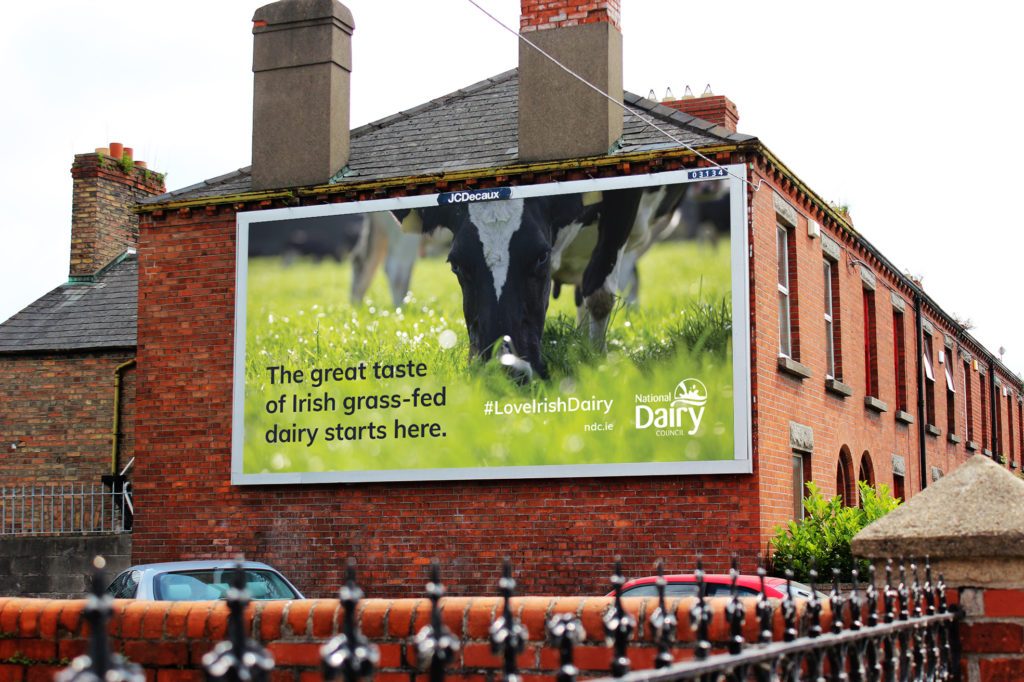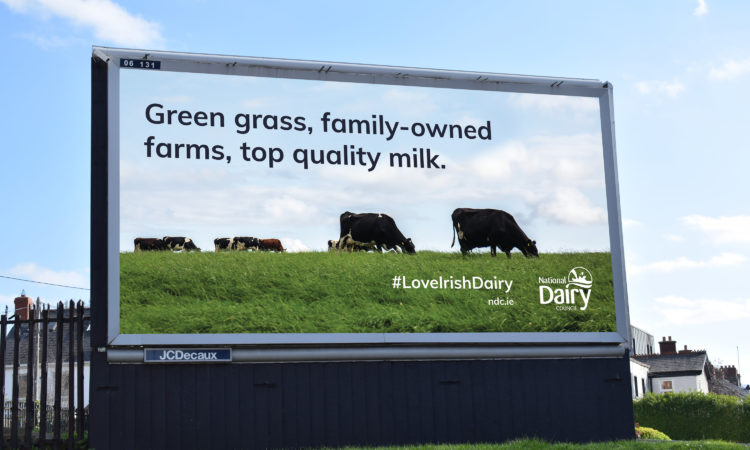Adrienne Attorp is a PhD student in Sociology and Social Policy at Newcastle University. Here she writes about some insights gained during recent fieldwork in Ireland.
This autumn I was in Ireland undertaking fieldwork for my ongoing PhD research, which focuses on agriculture policy, land use and waterway management on the island of Ireland. While there, I travelled all over the country, interviewing people from across the agriculture sector, including farmers, civil servants, industry lobbyists and NGO workers. I hoped to find out how the Irish agriculture industry plans to deal with its ongoing water pollution issues.
Dairy is King
Something that became abundantly apparent over the course of my visit is that dairy is ‘king’ in Ireland. This, of course, was not a total surprise, given that it is by far the most profitable agricultural enterprise in the country. Although only 13% of in Ireland’s 137,500 farms are devoted to dairy – there are approximately 18,000 dairy farmers in the country, managing around 1.35 million cows – Irish dairy produce exports totalled €4.6 billion in 2017, accounting for 34% of Irish agri-food exports. What I had not fully understood until I started talking to people was just how much discussion of the dairy industry dominates discourse around land and waterway management practices on the island. This may have interesting implications for how best to address Irish agriculture’s pollution problems.

Photo credit: Adrienne Attorp
A brief History of Irish Dairy Farming
Dairying has a long history in Ireland. Archaeologists at the University of Bristol argue that dairy was an important food source for Neolithic peoples on the island, after their research identified traces of dairy fats in pots found in the region dating between 4,000 and 2,500 BC (Smyth and Evershed, 2016). They note that, as dairy cattle are not native to the island, early farmers – possibly indigenous foragers or incoming farmers, or both – would have had to transport the animals across the open sea to Ireland in small vessels that could hold only a few animals at a time. This was no easy feat, and “…these voyages are unlikely to have been undertaken without a significant degree of determination and broader social support” (Smyth and Evershed, 2016, p. 220). The Irish love affair with dairy clearly has deep roots and continues to be an integral part of the country’s social, cultural and economic fabric.
Fast forward to the 20th century, by which point the Irish landscape had been transformed into a patchwork of small, family-owned farms. This landholding pattern developed as a result of centuries of land rights struggles under British occupation. In the late 19th century, a series of ‘land agitations’ and a changing political environment finally forced the British government to concede to far-reaching land ownership transfers from members of the British landlord class to their impoverished tenant famers (Hannan and Commins, 1992 [1]). As a result, family farms became the central focus of what was previously quite a diverse rural economy. By the 1920s, the majority of Ireland’s ‘active population’ were either farmers or ‘relatives assisting’ with farming (Hannan and Commins, 1992). Dairying would have been one of many agricultural activities undertaken by such farmers. Although the significance of agriculture in Ireland declined as the 20th century progressed, this landholding pattern remained relatively consistent through the middle of the century.
Prior to Ireland’s accession to the European Economic Community (EEC; now European Union) in 1973, the Irish dairy sector was not particularly significant economically. The majority of Irish dairy was consumed within Ireland, with UK being the country’s only meaningful export market. This changed with entry to the EEC. Common Agricultural Policy price supports translated into a huge increase in milk prices, which, alongside improved access to the European market and general productivity gains, greatly stimulated production. Irish dairy output doubled between 1970 and 1984 (Donnellan et al., 2015). A similar trend occurred across the EEC, and by the late 1970s, there were considerable milk surpluses across Europe. In 1984, the EEC brought in a quota on dairy production to curb this, which dampened the growth of the industry and became one of the key factors resulting in the consolidation of dairy farming in Ireland. Between 1984 and 2014, the number of Irish dairy farms declined from 80,000 to 17,500. This was accompanied by a 470% increase in output per farm, a 350% increase in average dairy herd size and a 48% increase in output per cow (Donnellan et al., 2015). The trend was, unequivocally, ‘go big or go bust [2]’.
The Irish Dairy Industry Post-Quota
The EU milk quota was eventually lifted in April 2015. As a result, the volume of Irish dairy output increased by 60% between 2015 and 2019, translating into a €2 billion per annum increase in value (National Dairy Council, 2019). This rapid growth contrasts starkly with the prospects of dairy farmers in some other countries around the world, notably the United States, where the industry, which is the largest globally, is facing significant economic pressures and decline. For example, according to a recent New York Times article, in Wisconsin, a state known as ‘America’s Dairyland’, the number of dairy herds has fallen by half since 2005, and nearly 1,200 dairy farms have closed in the past two years alone.
Undoubtedly, there are multiple factors contributing to these contrasting fortunes. However, perhaps most relevant to this discussion, is Irish dairy’s USP as the ‘green option’: predominantly grass feed, it is touted as the “the lowest carbon emitting dairy sector in the Northern Hemisphere”. This, along with the sector’s comparatively high animal welfare standards, has attracted a strong international demand for the industry’s various products. Today, over 90% of Ireland’s total dairy production is exported to more than 120 countries, and despite its small size – both geographically and in population terms – Ireland is consistently one of the largest dairy exporters globally.

Photo credit: Agriland 2019
The Dairy Industry and Ireland’s Waterways
While this growth may be great for Irish dairy farmers and for the Irish economy more broadly, for those concerned with waterway management in Ireland, there is less cause for celebration. Ireland is a country covered in water, with 513 groundwater bodies, more than 800 lakes, and over 70,000 km of waterways (Fanning et al., 2017). Diffuse agricultural pollution (pollution from various sources, such as runoff from a field, as opposed to one single ‘point’ source) is the most significant source of water pollution in the country, and run-off of nutrients such as nitrogen and phosphorous, the majority of which comes from animal waste (van Grinsven et al., 2012), poses a particular problem (Mockler et al., 2017). ‘Green’ credentials or not, the Irish dairy industry’s ongoing growth ambitions may not be compatible with water quality targets Ireland is statutorily obliged to meet as a member of the EU.
This is not to suggest the dairy industry is uniquely responsible for Ireland’s water pollution problems. The Irish agriculture industry as a whole is very animal-production focused, and in terms of numbers, the Irish dairy herd is vastly smaller than either the beef cattle or sheep herds: there are 5.35 million beef cattle in Ireland – nearly four times the number of dairy cows – and approximately 3.9 million sheep (Teagasc, 2017). Moreover, from what I can gather through my interviews thus far, the dairy industry has been leading the way within the agriculture sector in terms of trying to improve its sustainability. Dairy Industry Ireland has initiated a broad reaching sustainability initiative called ‘Dairy Sustainability Ireland’, and according to many of the policy makers and extension workers I spoke to, dairy farmers are often the most likely to engage with efforts to mitigate pollution.

Photo credit: Agriland 2019
This is, of course, not only because of some altruistic desire to help the environment, although for some farmers, such as those involved in the innovative BRIDE project, this does indeed play a leading role. Mainly, the dairy industry appears to be acutely aware of its obligations to maintain water quality under Ireland’s current Nitrates Directive derogation [3], and is very wary of losing this privilege. However, it is clear there are also other factors at play. Practically speaking, because the majority of dairy farmers farm full time, they tend to have more capacity to engage with extension services and stay up-to-date with industry trends than do their counterparts in the drystock industry, many more of whom farm part time. Because dairy is profitable, dairy farmers also tend to have more access to capital, enabling them to invest in measures that help mitigate pollution. Furthermore, dairy farms are often based on some of the best quality land, meaning that in many cases, nutrients are less likely to run off from these farms into waterways. Drystock farmers on more marginal land may have greater runoff issues, even if they farm less intensively. Last, but not least, public opinion plays a big role; current ‘plant-based’ diet trends are making the industry sit up and take notice, and public awareness about the environmental impact of agricultural practices generally is also placing pressure on the industry.
What does this mean for Ireland’s commitment to have all of its waterways achieve a ‘good’ status under the EU Water Framework Directive by 2027? Clearly, engaging with the dairy industry will continue to be very important. It is a very big player, and dairy farmers seem to have the willingness and capacity to address water management issues. Equally, since drystock farmers are also a big part of the pollution problem, but are harder to engage, then more creative ways will need to be found to do so. Furthermore, the discussion cannot be about dairy and drystock farmers only. Although industries such as pig, poultry and mushroom are far less significant, both in terms of economic output and of number/size of farms, they are still a major pollution risk, particularly in some regions of the country where they are concentrated. How exactly improvements are to be achieved remains to be seen, but I hope that my research will provide some insight as to how to bring everyone on board. King or not, the dairy industry is but one of several players that have to work together to reach Ireland’s environmental goals.
Sincere thanks to the Enviresearch Foundation for funding this research visit.
[1] Hannan, D. and P. Commins (1992). The significance of small scale landholders in Ireland’s socioeconomic transformation. The development of industrial society in Ireland. J. Goldthorpe and C. Whelan. Oxford, Oxford University Press: 79-104.
[2] This is, of course, a relative term. Today, the average size of an Irish dairy herd is 80 cows, whereas in the United States it is around 230. In some cases, American CAFOs may house thousands of cows.
[3] Under the existing Nitrates Directive derogation, approximately 7,000 intensive farmers in Ireland (mostly dairy) are able to farm at stocking rates higher than permitted than baseline Nitrates Directive rules. Most argue this is critical to sustaining existing levels of dairy production in the country, let alone expanding them.
